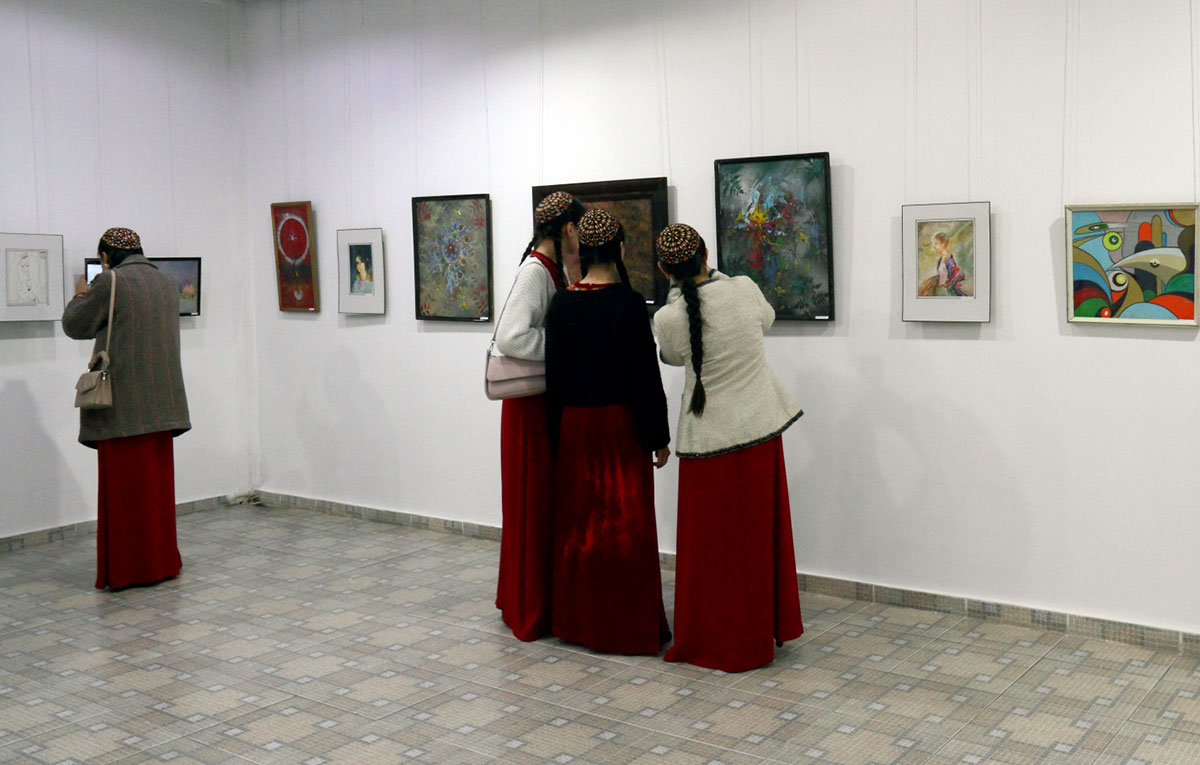On April 22, the opening of the exhibition “Magtymguly Fragi and the Cultural Heritage of Turkmenistan”, organized by the Permanent Representation of Turkmenistan to UNESCO together with the Embassy of Turkmenistan in France, the Ministry of Culture of Turkmenistan, took place at the UNESCO headquarters in the capital of a friendly state. It was also held a scientific conference, dedicated to the 30th anniversary of the activities of the Turkmen-French archaeological group.
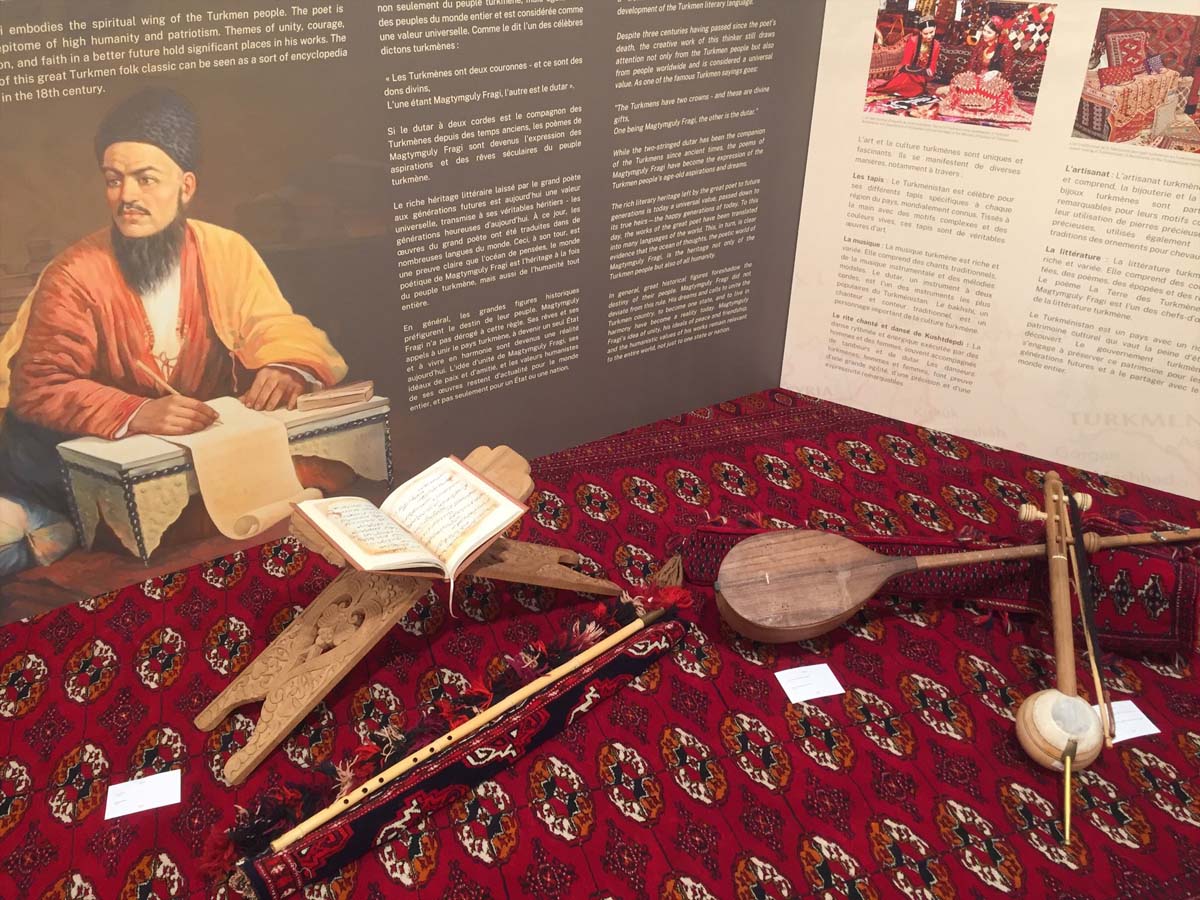 |
 |
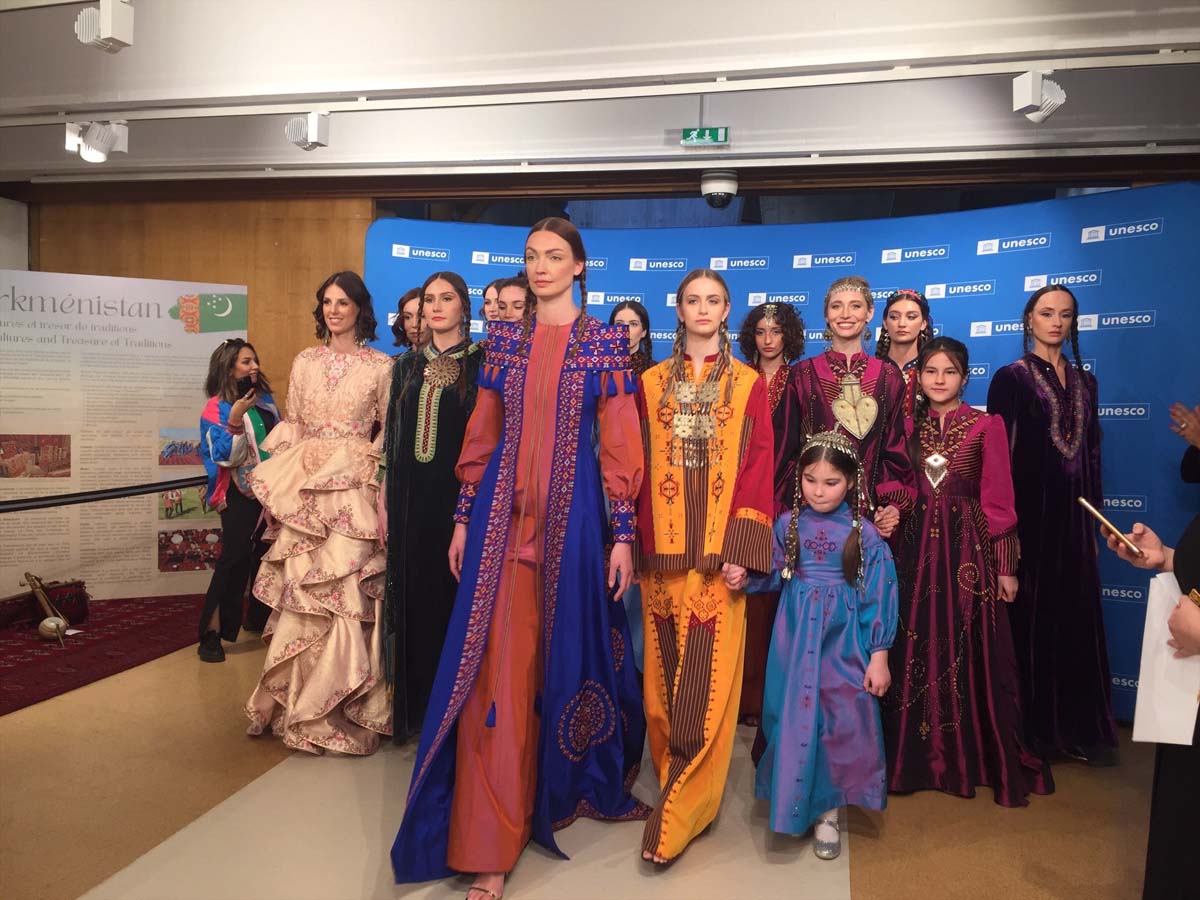 |
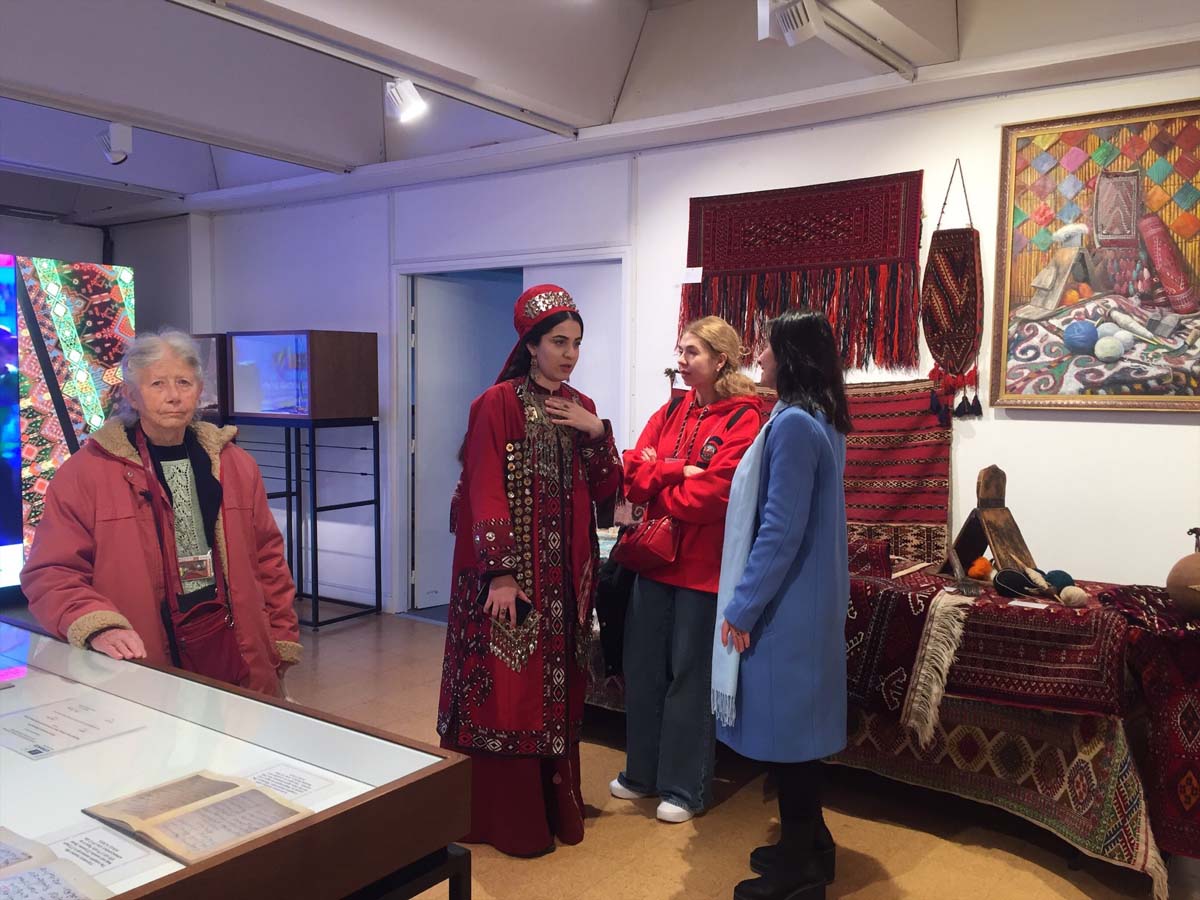 |
At the opening ceremony, representatives of the Turkmen and French sides expressed heartfelt gratitude to the heads of the two states for the ongoing political course that facilitates the strengthening of the traditionally fruitful humanitarian dialogue, rapprochement and mutual understanding of friendly peoples. At the same time, the emphasis was placed on the fact that the current creative event in Paris, within the framework of which the exhibition “Magtymguly Fragi and the Cultural Heritage of Turkmenistan”, a scientific conference, a concert of cultural and artistic figures, and a display of traditional Turkmen clothing – another clear confirmation that our country, like most states whose foreign policy is based on the principle of peaceful coexistence and goodwill, uses cultural diplomacy to popularize its rich cultural heritage and promote the achievements of the Homeland.
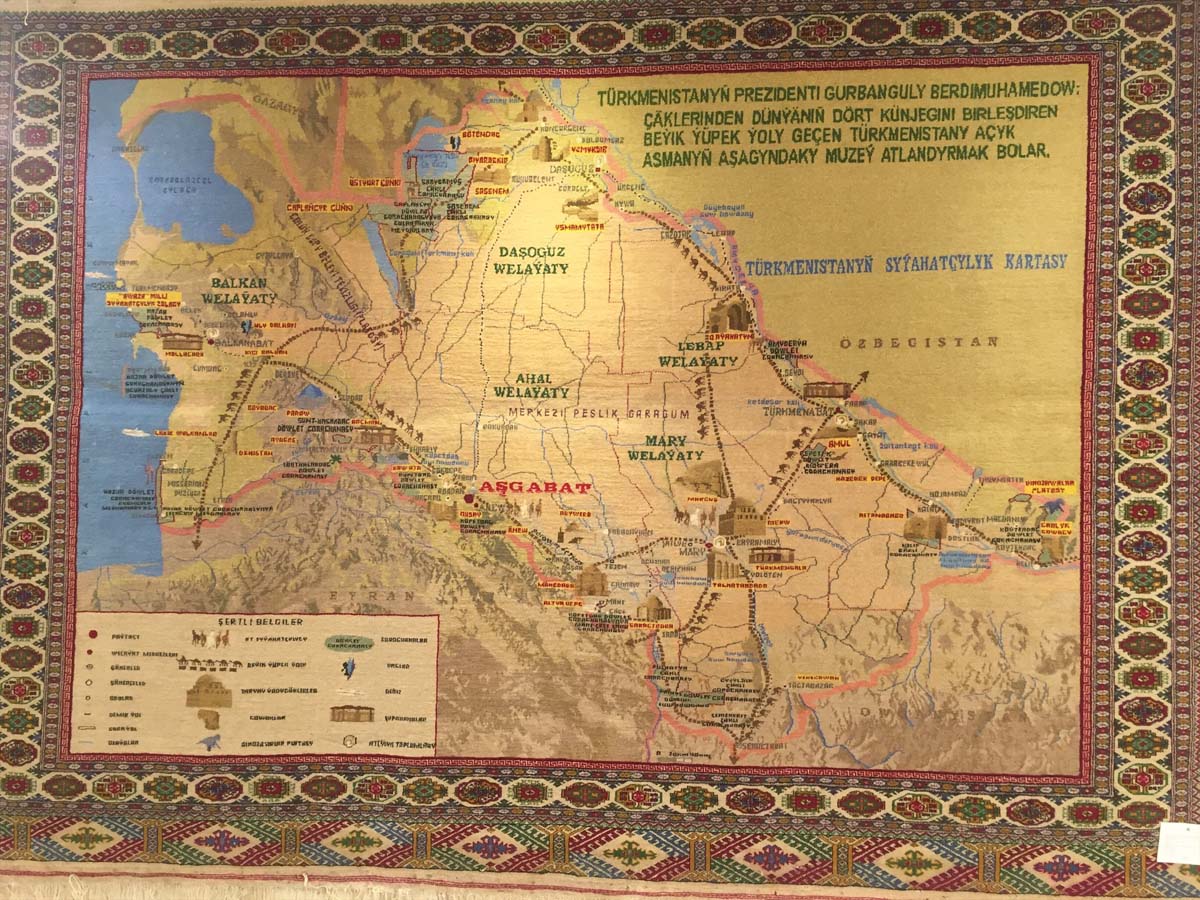 |
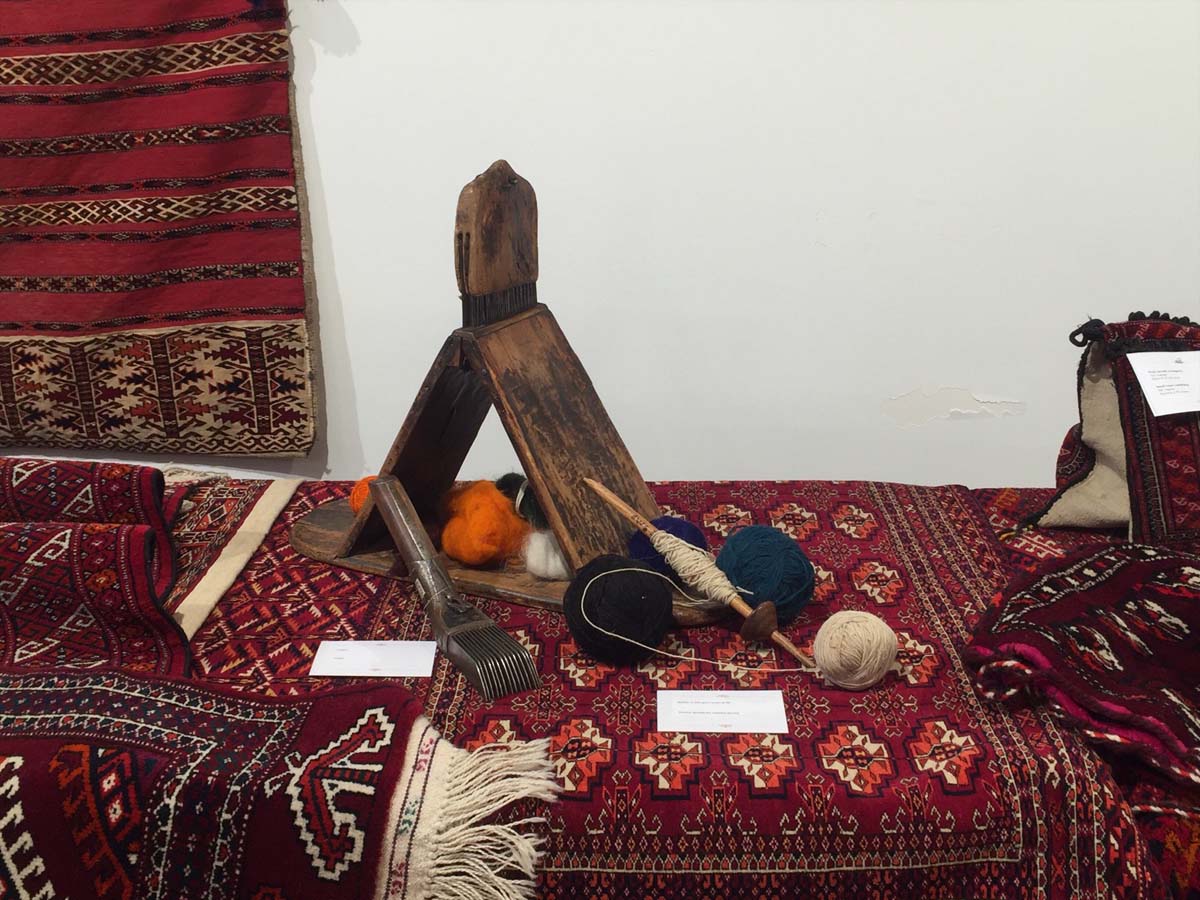 |
Deputy Director General of UNESCO Ernesto Ottone Ramirez, during his speech, noted the importance of the event, as well as the role and significance of the work of the poet Magtymguly Fragi, who has been glorifying the Turkmens with his immortal works and name for about three hundred years. The success of long-term cooperation between Turkmenistan and UNESCO was especially emphasized, which includes large-scale comprehensive activities to study the rich cultural heritage of the Turkmen people, effective interaction in the scientific and educational sphere and other areas.
The exhibition, organized in one of the halls of UNESCO headquarters in Paris, presented the fundamental works of the National Leader of the Turkmen people, Chairman of the Halk Maslakhaty of Turkmenistan Hero-Arkadag Gurbanguly Berdimuhamedov and President Serdar Berdimuhamedov, collections of poems by Magtymguly Fragi in various languages of the world, books and magazines about modern Turkmenistan, as well as examples of national decorative, applied and artistic arts.
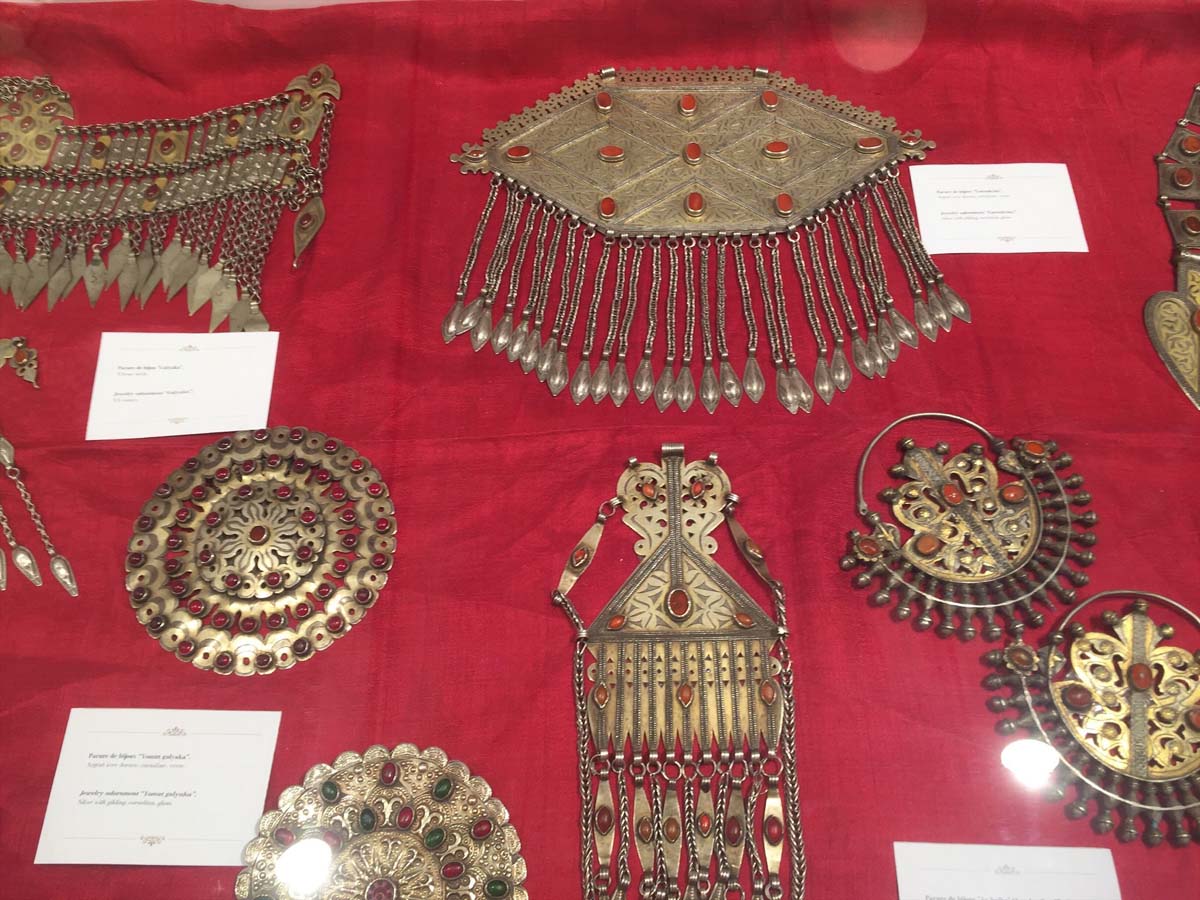 |
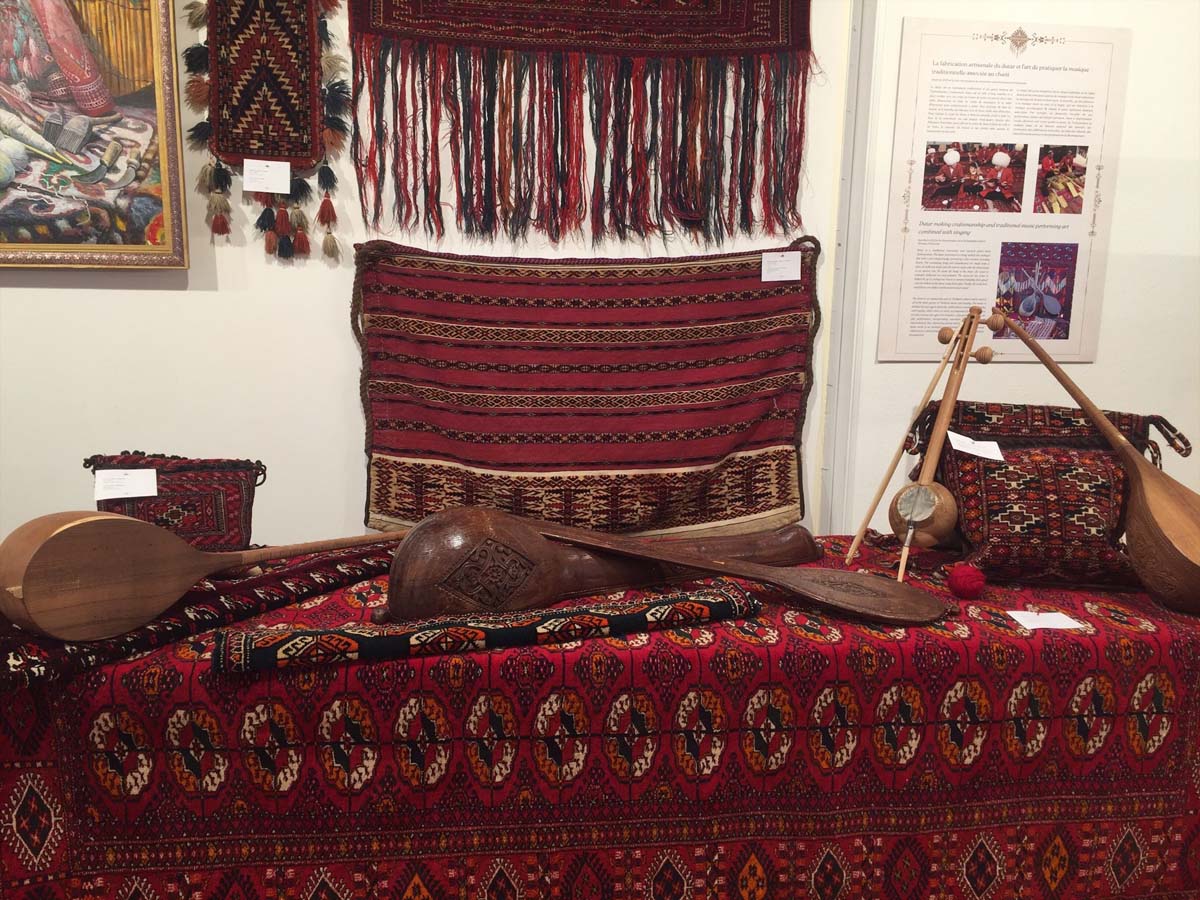 |
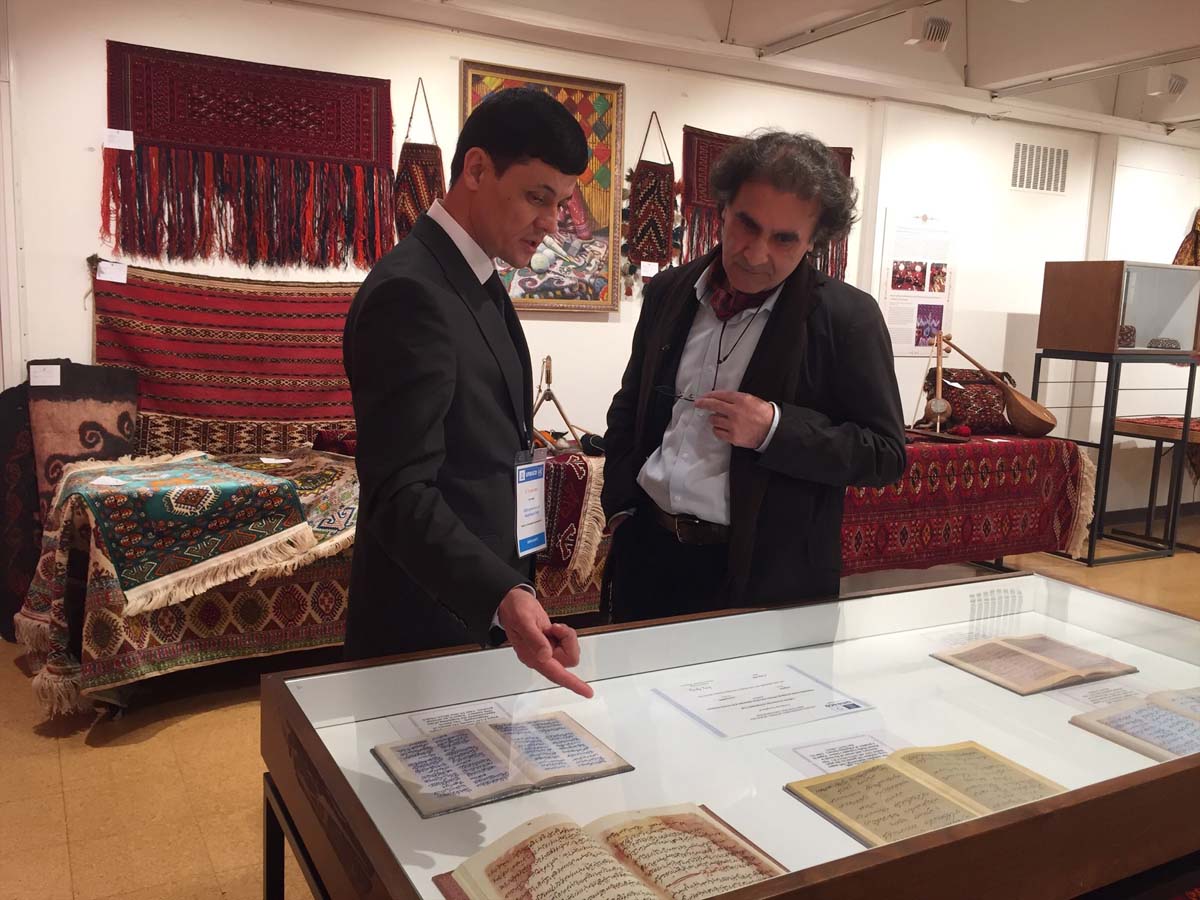 |
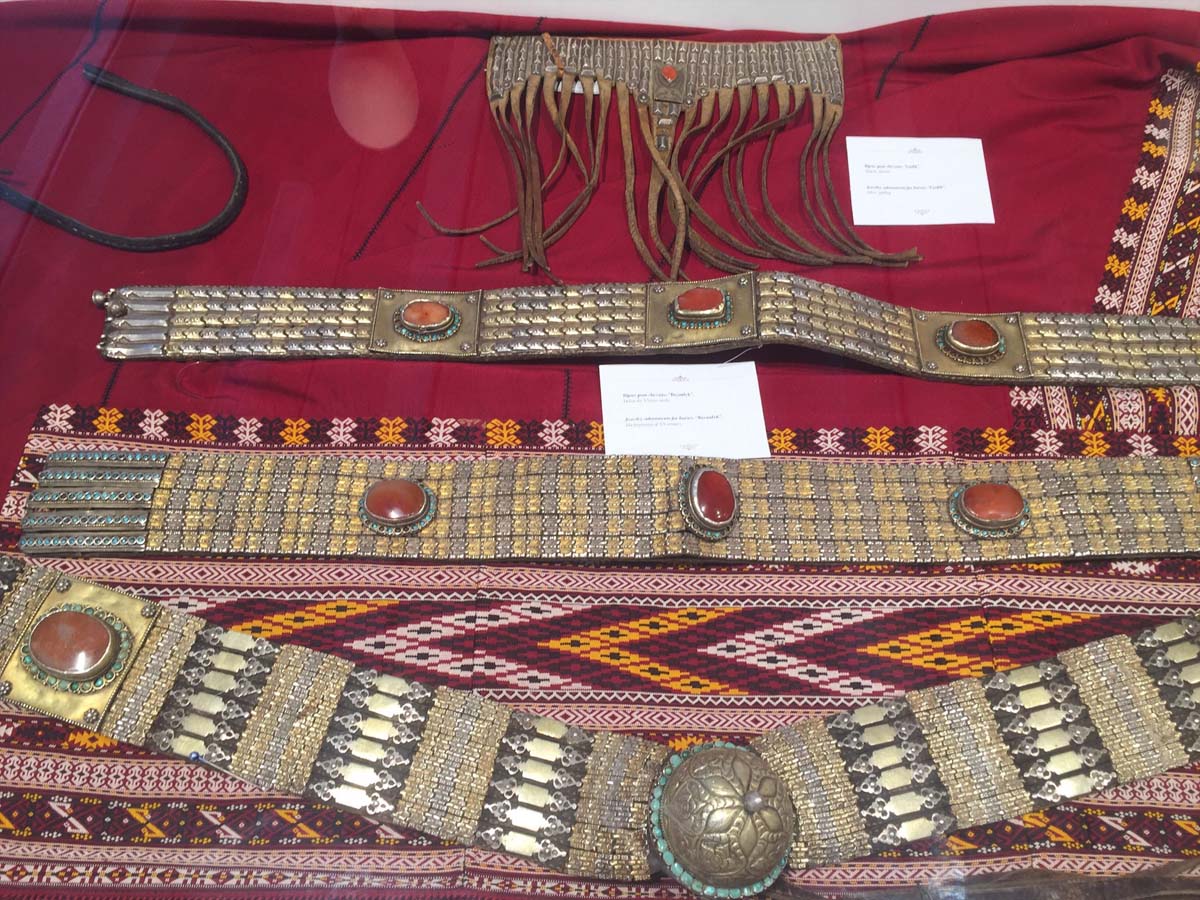 |
Exhibits from the funds of the State Museum of the State Cultural Center of Turkmenistan eloquently told French friends about the cultural traditions of our people, their original distinctive art and inexhaustible creative talents. During the exhibition, the event participants were able to see ancient national clothing, household items, and original examples of decorative and applied arts, which are an integral and significant part of the spiritual and material culture of the Turkmen people, who have made a huge contribution to the development of world civilization.
Among the presented examples of traditional clothing are “gyňaç” (shawl), “telpek” (hat), men’s “gyrmyzy don” (red robe) and a shirt. The filigree hand embroidery on “kürte” (headdress) and “çyrpy” (pinafore) amazes with its grace and beauty. Some of the exhibits give a visual representation of the interior decoration of the Turkmen yurt. Samples of magnificent Turkmen carpets are also presented here.
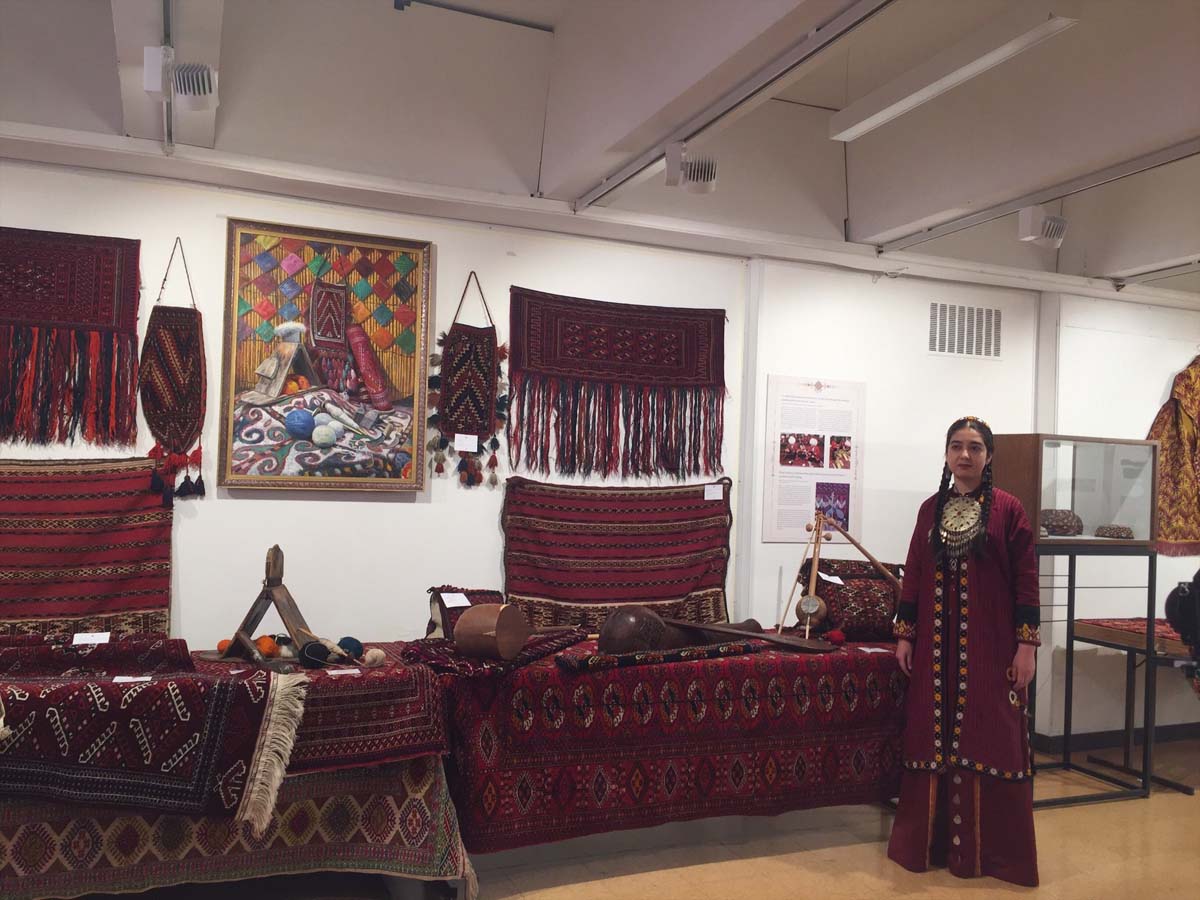 |
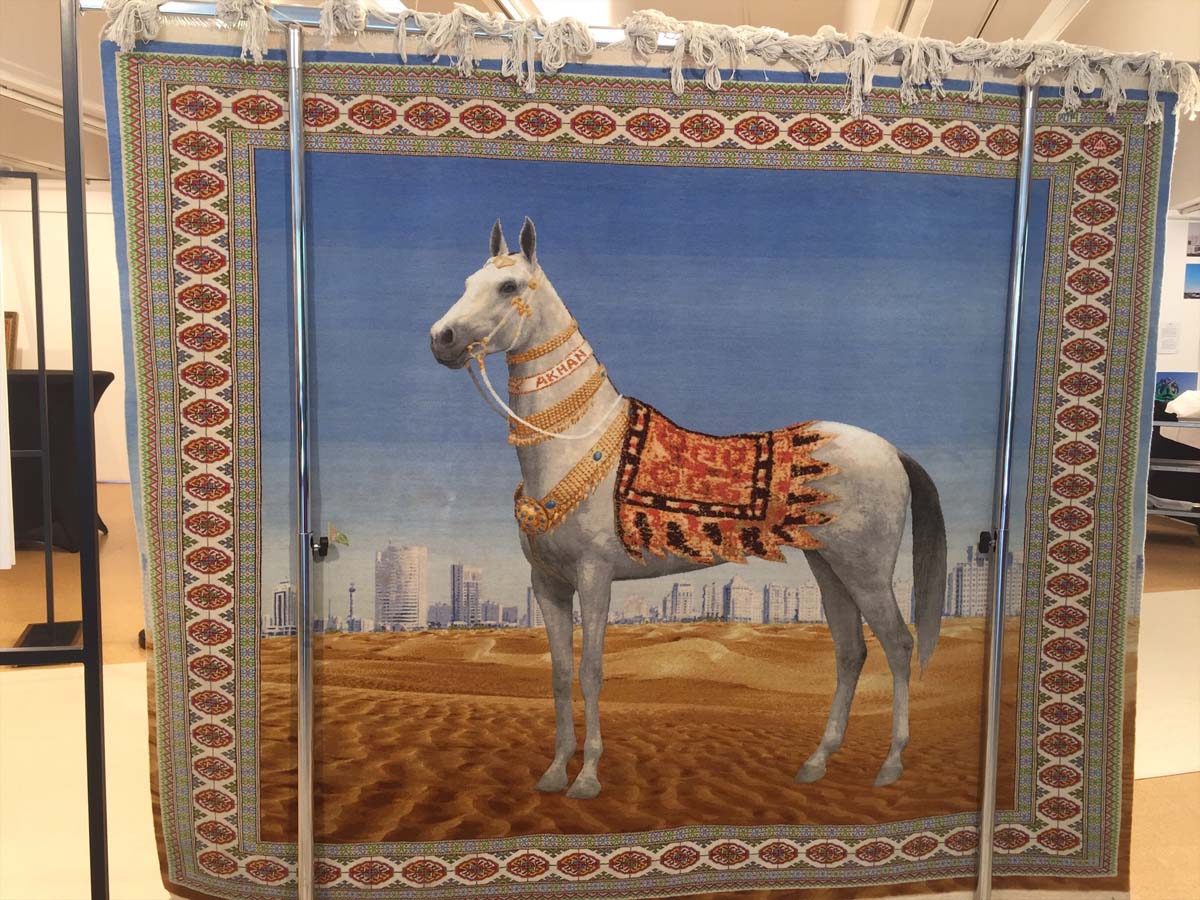 |
The exhibition also includes works by contemporary artists and photo selections, videos that clearly demonstrate the life of today’s Turkmenistan, its unique historical monuments, nature, and architectural sights of white marble Ashgabat.
A special place in the exhibition is given to the manuscripts of the great Turkmen poet, thinker of the East Magtymguly Fragi, who is rightfully considered a personality on a planetary scale; today, like centuries ago, he acts as a consolidating force. His poetry occupies a worthy place in the treasury of spiritual riches of humanity. A clear confirmation of this is the announcement of 2024 by the International Organization of Turkic Culture (TURKSOY) as the “Year of the great poet and thinker of the Turkic world, Magtymguly Fragi,” as well as the inclusion of the poet’s collection of manuscripts in the UNESCO Memory of the World register.
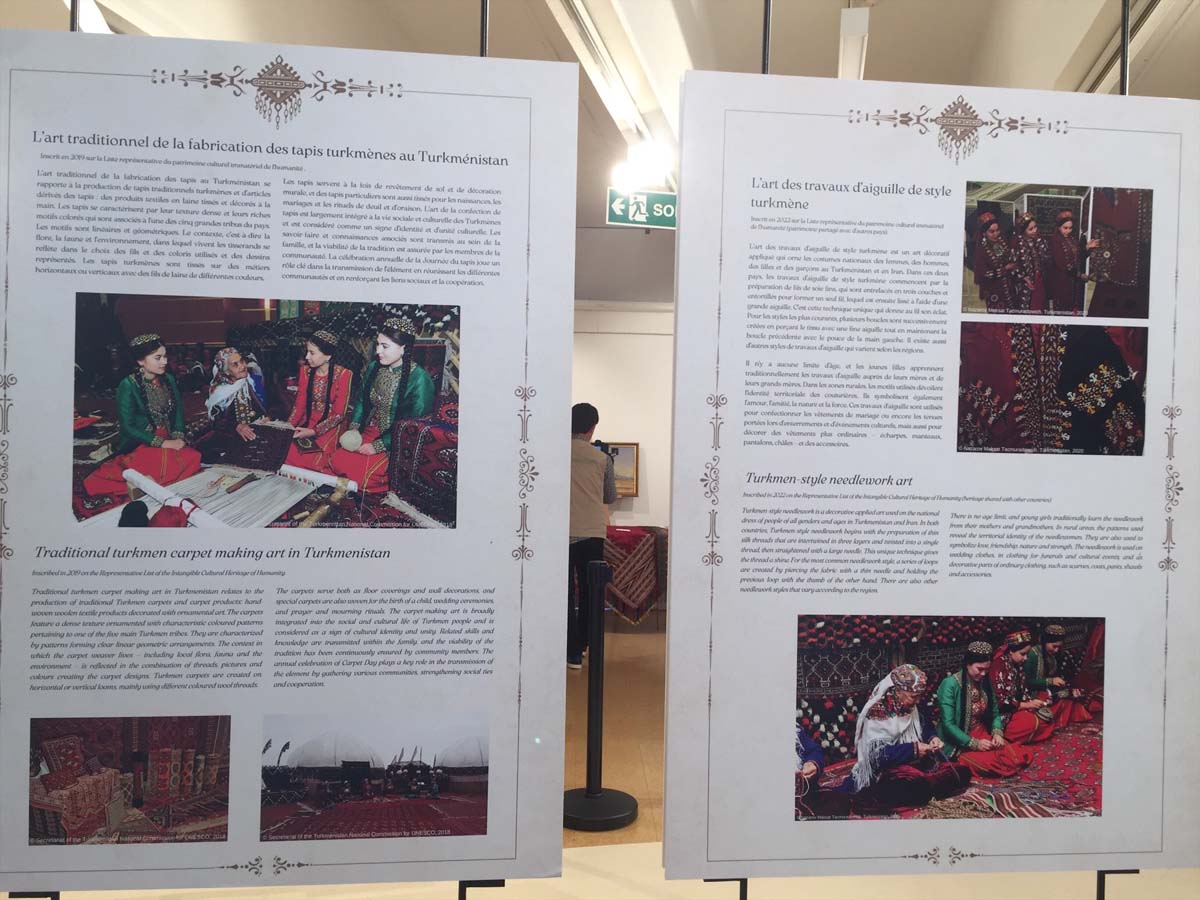
The work of the great classic will always remain an inexhaustible source of wisdom, moral purity and civic patriotism. The poetry of the brilliant poet raised the authority and respect for the spiritual potential of the Turkmen people to a height; his poems still sound modern today; collections of the poet’s poems have been translated into dozens of languages of the world. In this regard, it should be noted that at this event, poems of the great classic were recited in French (“Türkmenim”, “Pany dünýa”).
A wonderful addition to today’s extensive program was the display of an original collection of national costumes. By the way, the work of Turkmen designers has been repeatedly praised by authoritative fashion experts, including French ones.
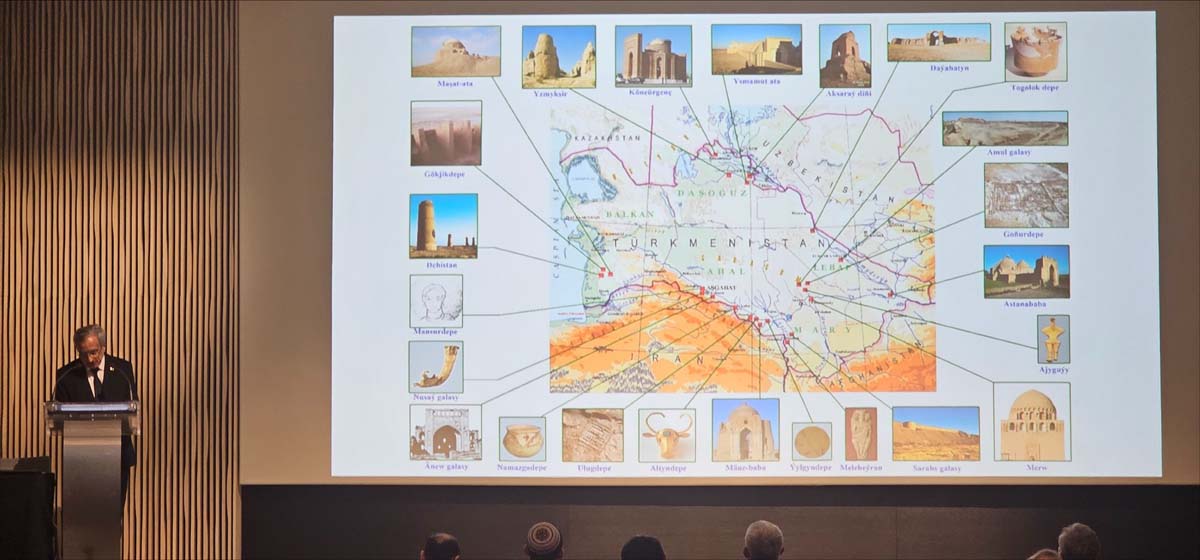
The organized tasting of national dishes as part of the current creative event provided an opportunity for participants and guests to get acquainted with the intricacies of the culinary art of our people. As is known, the distinctive feature of Turkmen cuisine is the extraordinary richness of dishes and the relative simplicity of their preparation, while they are often original and different from the dishes of neighboring peoples.
On this day, a scientific and practical conference was also held on the occasion of the 30th anniversary of Turkmen-French archaeological research. During the forum, held in one of the famous museums in France, which is dedicated to the history of the development of mankind, it was noted that our Fatherland has priceless treasures, which are evidence of the ancient history and rich culture of our people, thanks to the progressive policy of the National Leader of the Turkmen people and President Serdar Berdimuhamedov received world recognition.
Reviewing the results of the joint activities of scientists from the two countries, it was emphasized that the first French archaeological mission in Turkmenistan (MAFTUR) was founded in 1994 under an agreement between the French National Center for Scientific Research (CNRS) and the Academy of Sciences of Turkmenistan. It was noted in the reports that, within the framework of this cooperation, the Turkmen-French archaeological group has been conducting excavations in the town of Ulug-Depe in Kaahka etrap since 2001 and has been carrying out conservation and restoration work and research into the cultural layers of this archaeological site.
The presentations said that Ancient Dehistan became a kind of launching pad for subsequent research by French archaeologists, who then studied the Ulug-Depe site, located east of Ashgabat, in the vicinity of Kaahka. According to scientific data presented during the current forum, this monument is one of the centers of ancient civilization, whose heyday was in the middle of the 5th millennium BC. It was here that, during excavations carried out by a group of scientists from two countries, unique artifacts were discovered that shed light on the culture of that distant time.
The forum also presented data on conservation work ongoing at Ulug-Depe in parallel with archaeological excavations aimed at preserving and museumification of the excavated areas. As noted, at the MAFTUR archaeological base in Dushak village, with funds from the Leon Levy Foundation (USA), a special laboratory equipped with modern equipment for the conservation and restoration of archaeological finds was created. It is working on cleaning, preserving and restoring artifacts identified by archaeologists not only from Ulug-Depe, but also those monuments where other archaeological expeditions are working. In addition, the laboratory annually organizes training seminars for Turkmen restorers.
According to the unanimous opinion of the conference participants, the results of 30 years of activity give every reason to believe that this settlement occupied a strategic position in the center of the Kopetdag Plain during the last centuries of the first millennium BC.
At the end of the forum, those present expressed deep gratitude to the heads of Turkmenistan and France for the conditions created for holding such events, helping to familiarize the wider world community with the ongoing large-scale research activities of archaeological scientists of the two countries on the fundamental study of historical monuments and their preservation for future generations.






